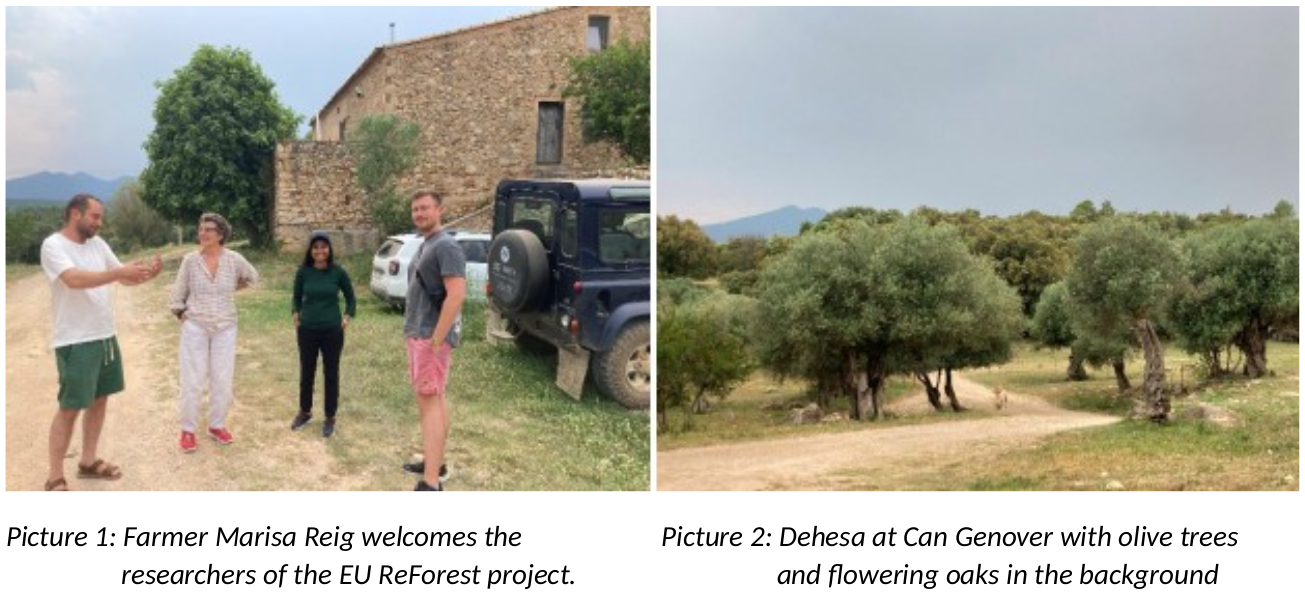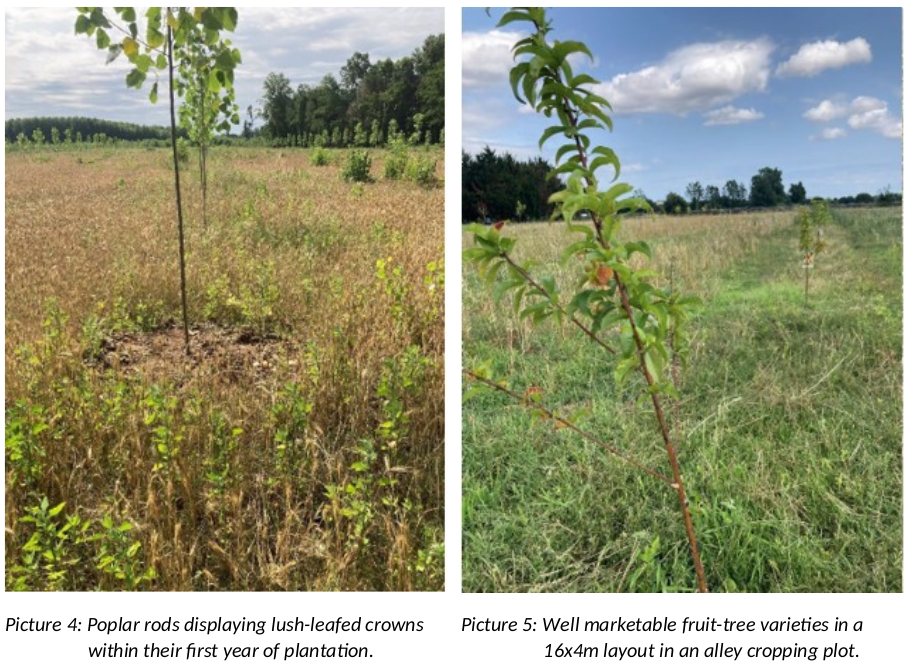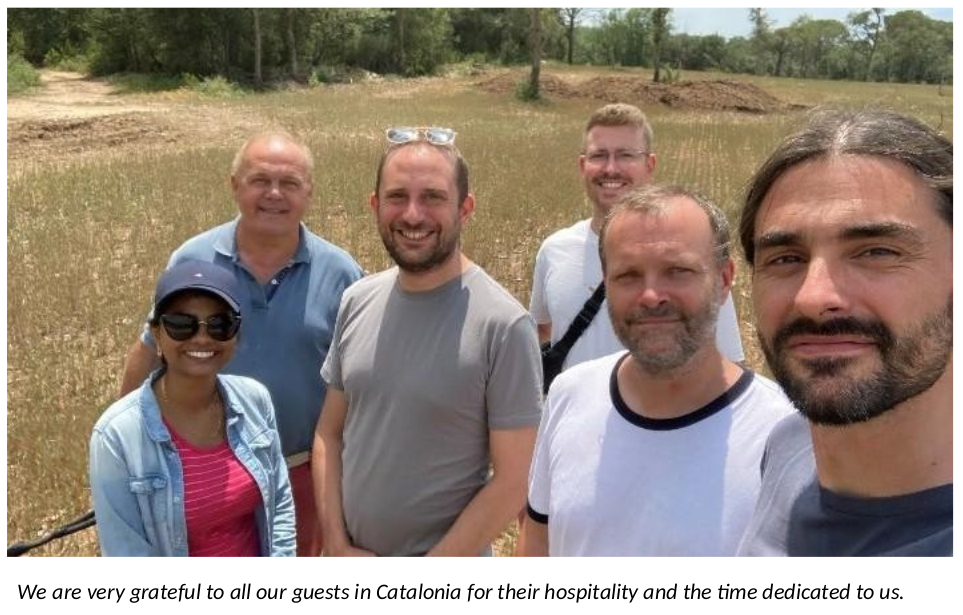Two-day field trip to Catalonia
Dr. Prajna Kasargodu Anebagilu and Dr. Marcos Jiménez Martínez, on a joint trip with two other researchers of the EU Horizon Europe project ReForest (https://agroreforest.eu/) - Johannes Schmitt from the University of Marburg and Rico Hübner, from the Germany Agroforestry Federation DeFAF, gained firsthand insights into different types of agroforestry transitions taking place in the province of Girona, located in the North Eastern corner of the Iberian Peninsula.
On the first day, the group visited Can Genover (https://biograssfed.com/pages/finca-ecologica-can-genover), a silvopastoral landscape stretching approximately 370 hectares, largely over rugged terrain on the pre-Pyrenean foothills. Marisa Reig took on the responsibility for the land in 2004, which, until then, had been a mosaic of low-fertility croplands and woodlands.

She initiated an ambitious plan to put suckler Aubrac cattle at the center of the farm and landscape management strategy. She developed pasturelands by sowing perennial grass species, mostly alfalfa, and stopped using agrochemicals. More recently, they had thinned the densest woodlands of the property to allow the passage of livestock. These benefit from diversifying their diets with fat-rich herbs, twigs and leaves from shrubs and tree saplings, while trampling the terrain and preventing the re-growth of the under-story and, therefore, the spread of uncontrollable wildfires. The cattle herd moves weekly across a network of grazing lands subdivided with electric fences. Rotational grazing and open-air resting allow the regeneration of woodland vegetation and promote the re-growth of pasture species. Vigorous populations of economically valuable plants, such as fennel, thrive successfully all over the landscape. The herd’s diet d consists exclusively of the vegetation growing at Can Genover all-year-round , and its tender, light-colored meat, is sold under the brand BioGrassFed (https://biograssfed.com/).

On the second day, the director of Fundació Emys (https://www.fundacioemys.org/en/areas-and-projects/sustainable-management/), Ander Achotegui Castells, guided us to visit more than a handful of silvoarable plots in the Riudarenes Municipality. As we approached our meeting point, we observed large extensions of monospecific, mostly hybrid plane or poplar, tree plantations. Antoni Trincheira, a forester diversifying his business model by converting some of his lands into agroforestry, told us that the increasing water scarcity and devaluation of the price of national wood products had made silvicultural production less profitable over the last decades, even with more frequent wood harvest failures. Within a sandy floodplain, he showed us a 10-hectare alley cropping plot planted with poplar rods, and another 2-hectare plot with seven-year-old walnut trees, both plots cultivated with wheat-rapeseed-barley rotation. Afterwards, Antoni drove us to the upper slope of the valley, largely covered by Mediterranean woodland. There, he had partially cleared one dense forest block by logging mature or diseased trees, turning the landscape into an intercropped open woodland. With this intervention, he expects to promote the growth and productivity of healthy cork oaks while obtaining some annual income from the cultivation of annual crops.

During the afternoon, we visited the headquarters of the EMYS Foundation. After a well-deserved meal, made from local seasonal products in Can Moragues (https://www.canmoragues.org/en/) and an enriching exchange of ideas with Ander and his colleague Carla Cárdenas, a technician in sustainable agricultural and forestry management, they showed us three plots within a cropland landscape structured by old-growth woody hedgerows. These are part of the demonstrative sites of the EU Life AgroForAdapt project (https://agroforadapt.eu/en/project/map-of-agroforadapt-demonstrative-systems/), that had been planted this year with trees. Two of the plots are alley cropping systems with fruit and nut trees; one for field crops and the other for vegetable cultivation. The third intervention consisted on a single elderberry strip dividing a four-hectare field into two, aiming to increase the provision of biodiversity-driven ecosystem services (such as pest control and pollination), associated with lengthening the woody perimeter, without reducing the operational efficiency of common-size tractors.

The exchange of ideas was very lively, but like everything else in life, the visit had to come to an end. We will stay in contact to receive updates on the development of agroforestry transitions in Catalonia. We thank Jaime Coello, from the CTFC (https://www.ctfc.cat/en/) and the AgroForAdapt project (https://agroforadapt.eu/en/home-eng/), for facilitating the connections. We come back to Germany with many new ideas, and we are convinced that this was the just start of what surely will become a long lasting and fruitful exchange to promote the re-adoption of agroforestry management across Europe.